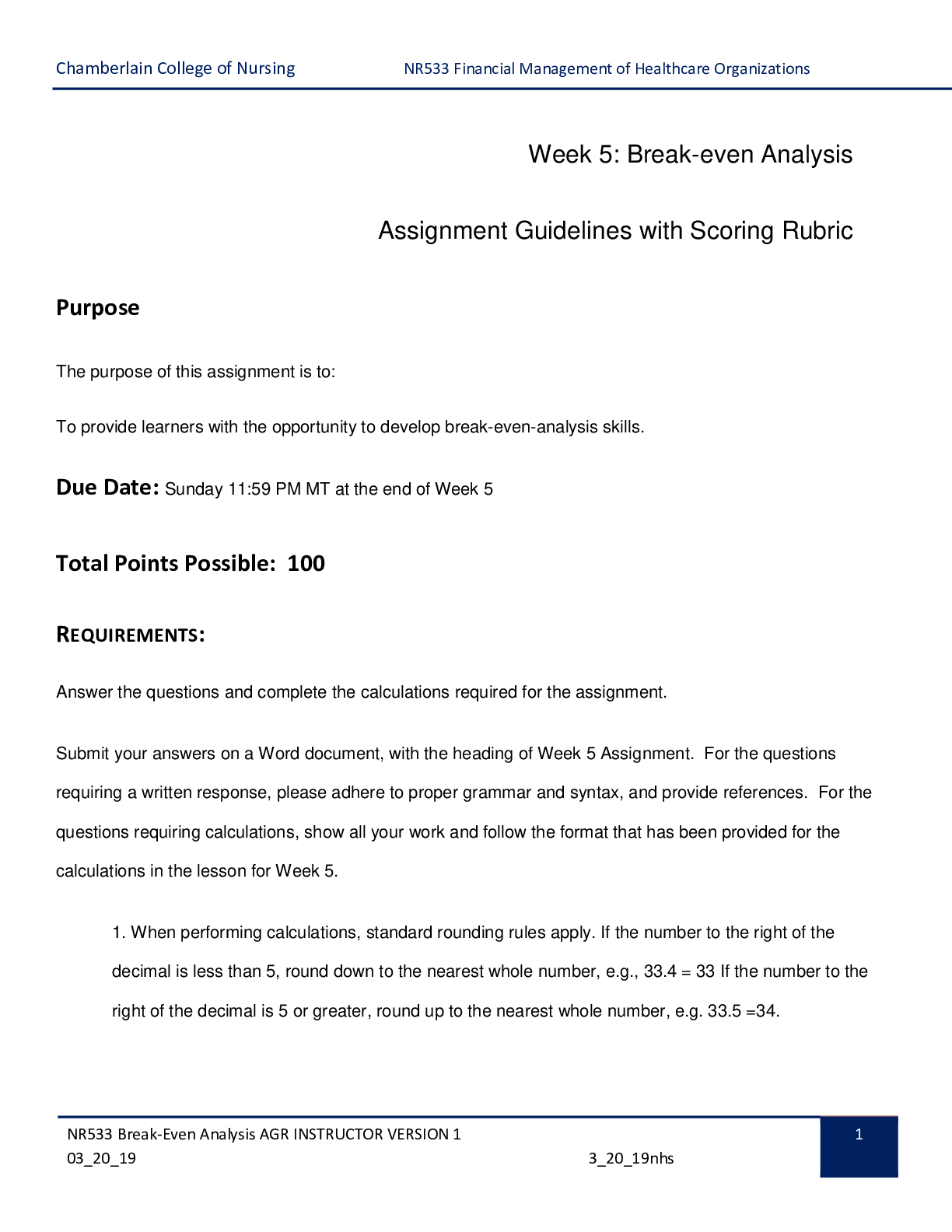Art > STUDY GUIDE > HIS 125 Module 2 (All)
HIS 125 Module 2
Document Content and Description Below
Read the questions below and write a response of at least two paragraphs in length. Each paragraph must consist of 5 to 7 sentences. Your answers should provide strong examples and details from the te... xtbook. 1. What does archaeology tell us about the Harappan civilization in India? That it was a sub continent of India and a large civilization spanning over nearly five hundred thousand square miles, making it twice as large a ancient Egypt or Sumeria, and having 300 cities and many more towns. It was located in the Indus Valley. Today this region is divided into Pakistan, Nepal, India, Bangladesh and Sri Lanka, but in premodern times it was know as India. (Pg 66, 67) 2. What kind of society and culture did the Indo-European Aryans create? The Aryans flourished during the Vedic Age named for the Vedas, a large and significant body of ancient sacred works written in Sanskrit. The Aryans developed the caste system, and Brahman religion, and the writing of the great epics that represent the earliest form of Indian literature. The rigveda is the central source of information on the early Aryans. The caste system divided society into strictly defined hereditary groups. Society was conceived of as four hierarchical strata whose members did not eat with or marry each other. The Aryans were portrayed through the Rigveda as warrior tribes who glorified military skill and heroism. The Aryans has superior military technology, including two-wheeled chariots, horses, and bronze swords. The Brahmin Religion was the Aryan's belief which recognized a multitude of gods, whom shared features with the gods of other Indo-European societies such as the Persians and Greeks. Ordinary people dealt with these gods through the priest who made animal sacrifices to them.This belief also taught on karma and reincarnation. (pg 73, 74) 3. What ideas and practices were taught by the founders of Jainism, Buddhism, and Hinduism? Jainism was the belief that humans, animals, plants and even inanimate objects all had souls enmeshed in matter , accumulated through the workings of karma. The souls have finite dimension, they float or sink depending on the amount of matter with which they are enmeshed. The ascetic, who willingly undertakes suffering, can dissipate some of the accumulated karma and make progress toward liberation. Jainism followers pursued such liberation by living ascetic lives and avoided evil thoughts and actions. They considered all life sacred and tried to live without destroying other life. Jains practiced nudity, they were vegetarians and practiced non violence. (pg 75) Buddhism is an eight fold path toward liberation, that all people can set out on. Individuals must take a series of steps including: recognizing universality of suffering (right knowledge), deciding to free one self from it (right purpose), choosing right conduct, taking speech, right livelihood and right endeavor. the seventh step is right awareness, or constant contemplation of one's deeds and words, giving full thought to their importune and whether they lead and enlightenment. The final step right contemplation, entails deep meditation on the impermanence of everything in the world. Individuals who achieve liberation are freed from the cycle of birth and death and enter the state of nirvana or freedom from reincarnation. Buddhism ignored the caste system, and there was no harm in honoring local gods as long as one remembered the goal of enlightment. Buddism rejected animal sacrifice (pg 77) Hinduism is the belief that the vedas are sacred revelations and that a specific caste system is implicitly prescribed in them. Hinduism is a guide to life, the goal is to reach union with brahman. Brahmins retained their high social status, but it became possible for individuals to have more direct contact with the gods, showing their devotion without using priests. In their quest for brahmin, people are to observe the moral law or Dharma, which stipulates the legitimate pursuits of Hindus: material gain, as long as it is honestly achieved; pleasure and love for the perpetuation of the family; and moksha, release from the wheel of life and unity with brahmin. Hinduism validated the caste system, provided a complex sophisticated philosophy of life and a religion of enormous emotional appeal that was attractive to ordinary indians. (pg 81) [Show More]
Last updated: 1 year ago
Preview 1 out of pages

Reviews( 0 )
Document information
Connected school, study & course
About the document
Uploaded On
May 30, 2020
Number of pages
Written in
Additional information
This document has been written for:
Uploaded
May 30, 2020
Downloads
0
Views
11

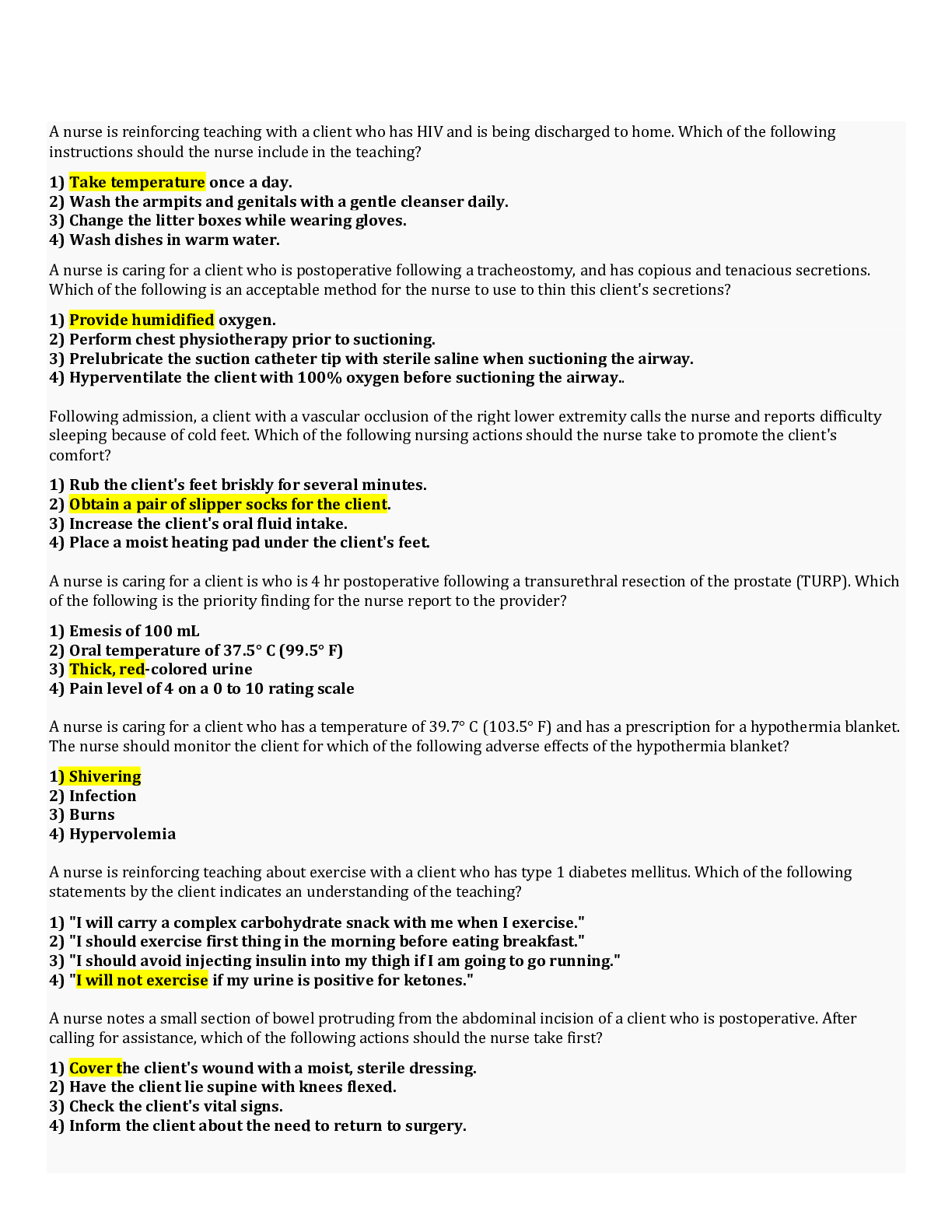
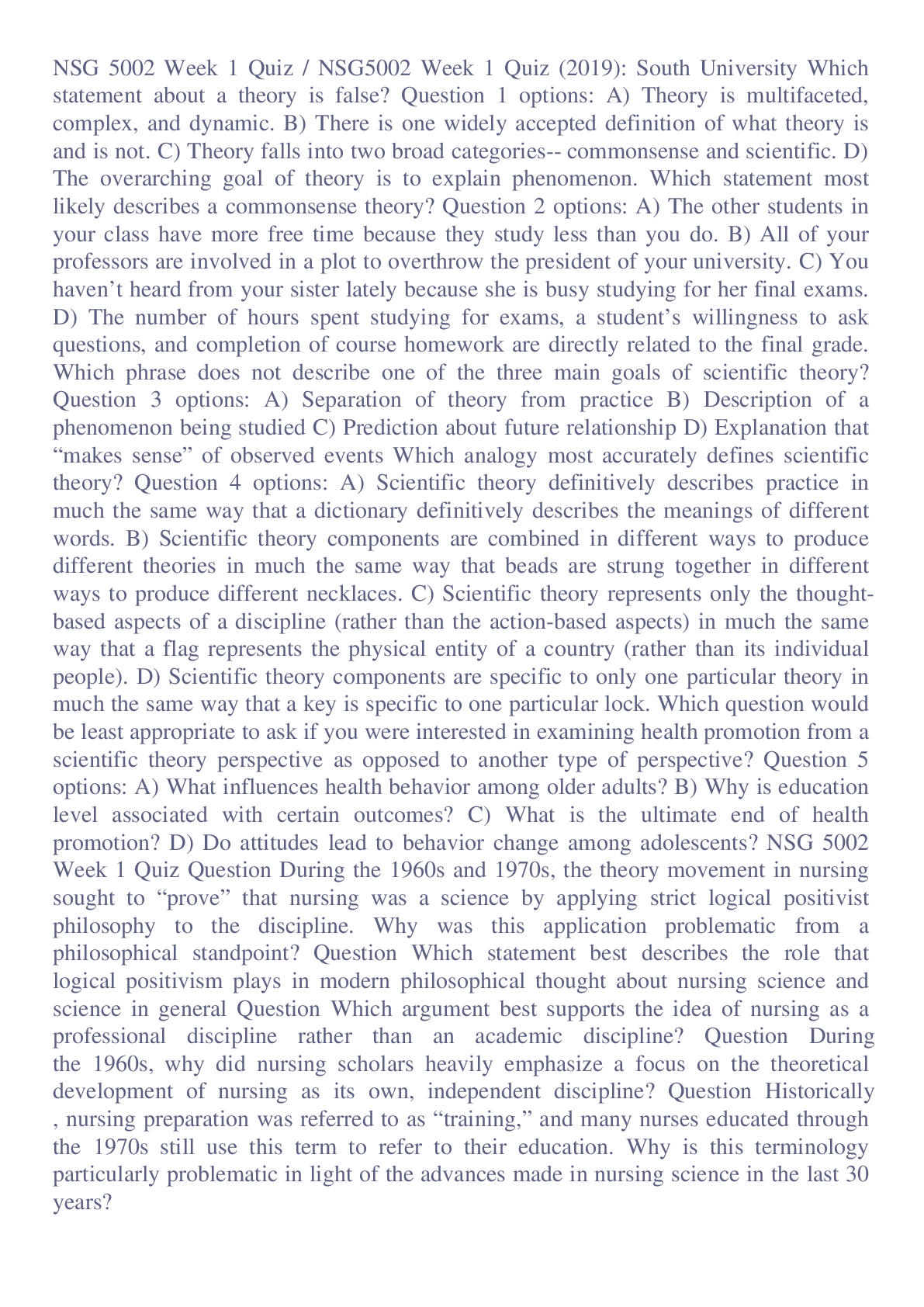





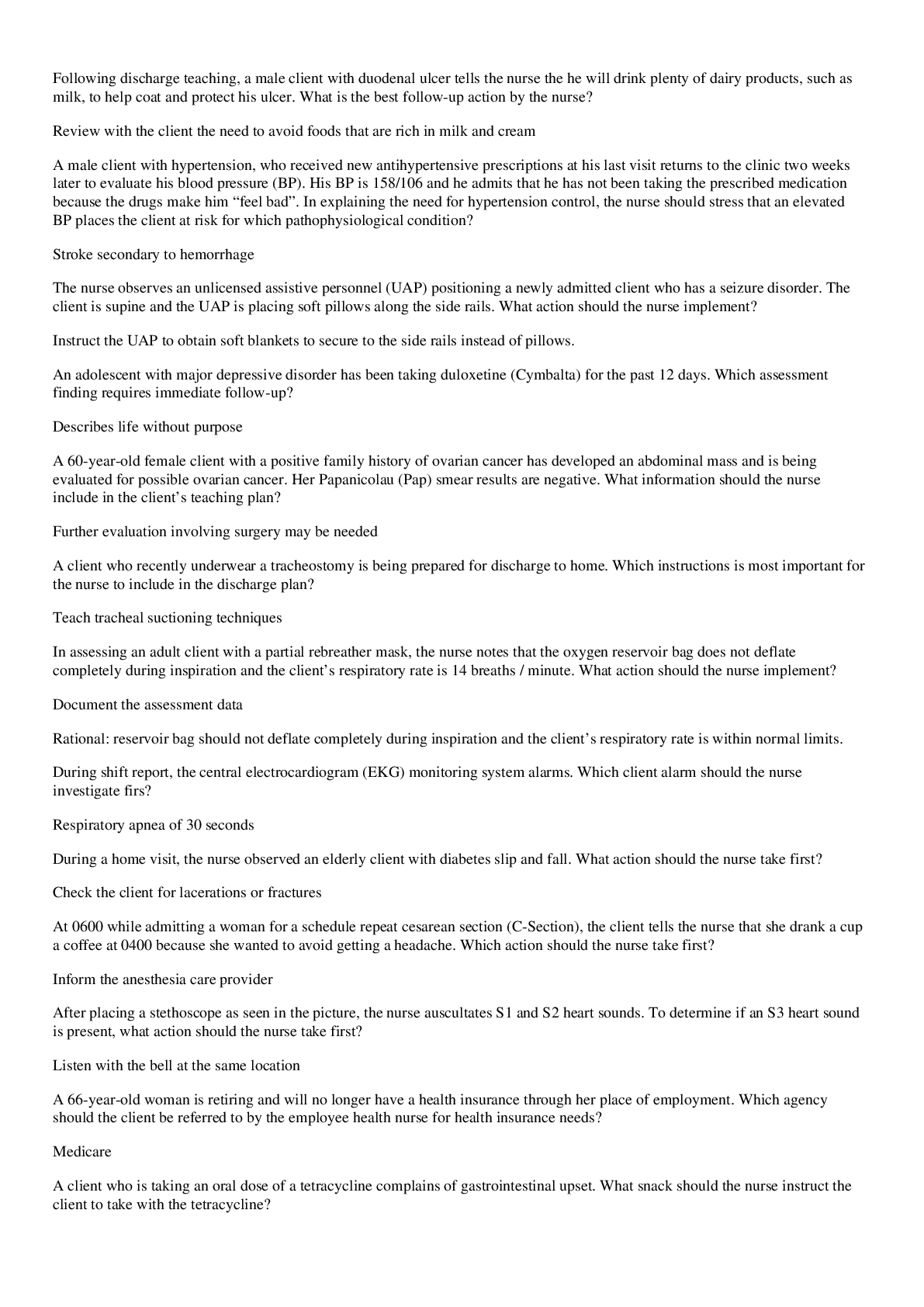

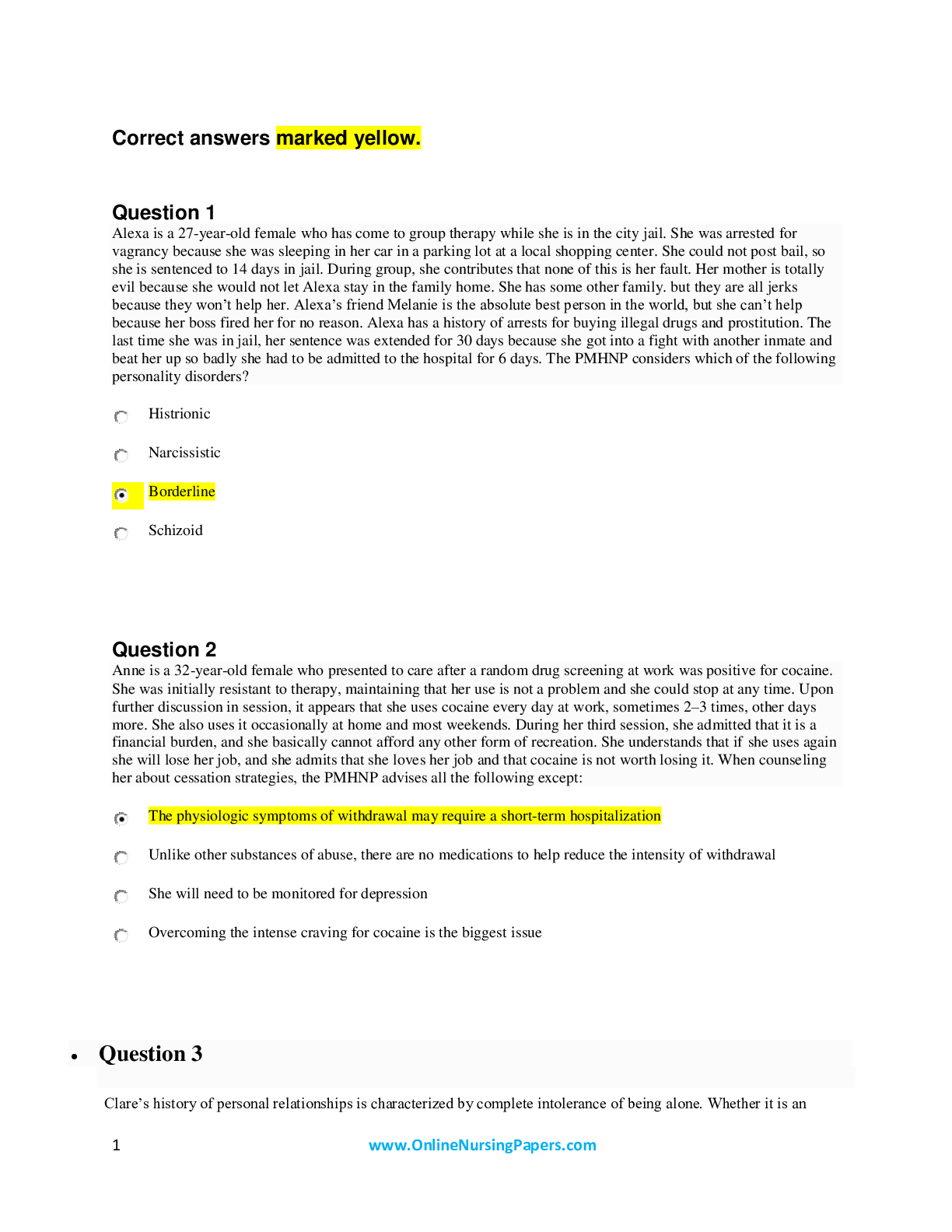

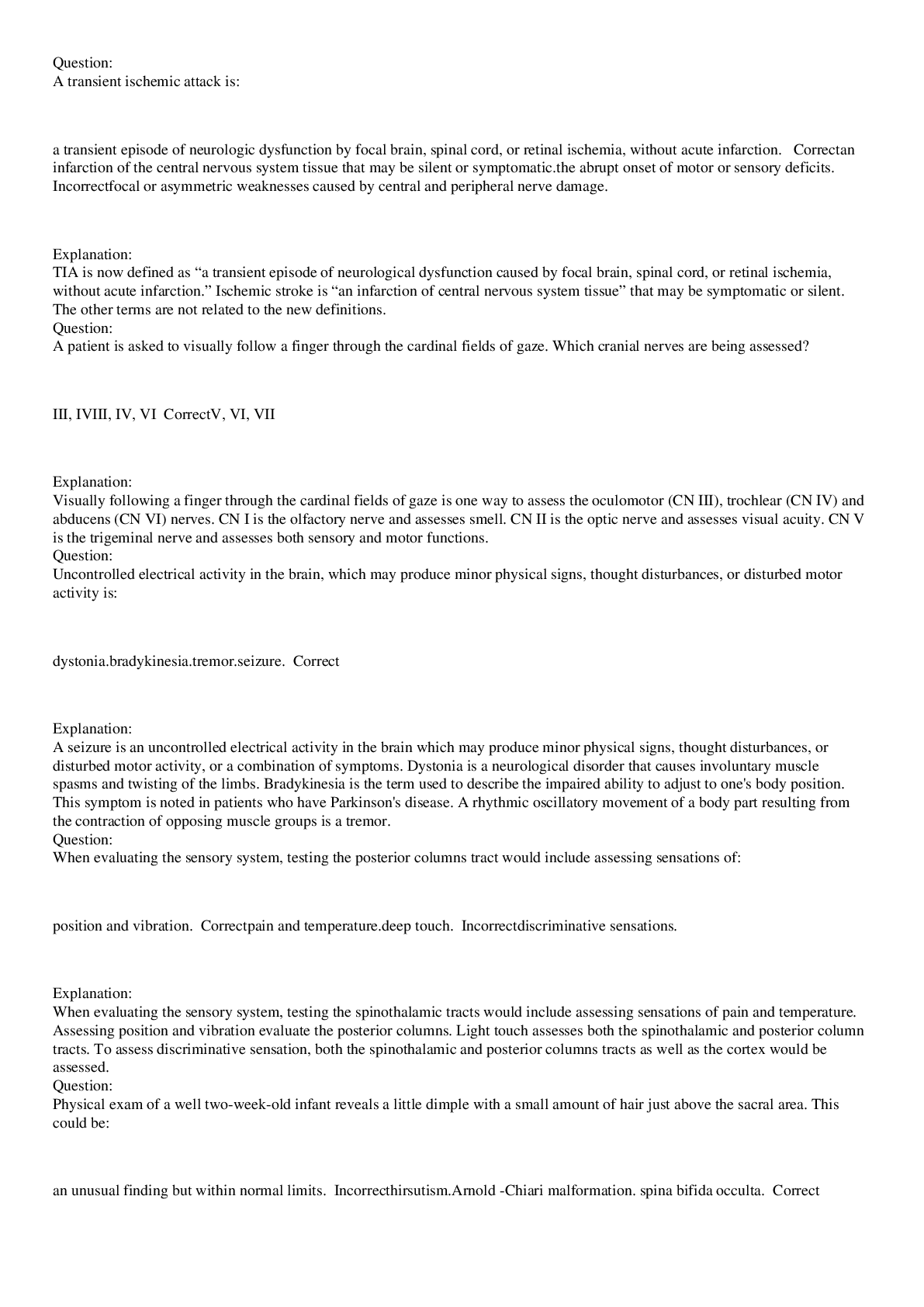









.png)










